How exciting! The approach of the school Easter holidays is always an exciting time here in the Highlands of Scotland, especially in Boat of Garten, as it signifies the start of so many more opportunities to get out and about. Winter can be a bit of a sleepy time, when if you don’t ski, there are far fewer places to go and things to do than during the summer. Many of the castles and other visitor attractions either close or are on such reduced opening hours, you wonder why they bother at all. But once we’re over half way through March, we can look forward to being spoilt for choice
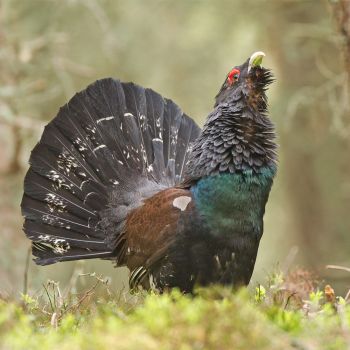
The ospreys should be returning to Boat of Garten in April. The RSPB are poised to open up the visitor centre over the Easter holidays and are closely monitoring the birds on their migration back to Scotland. Unfortunately sometimes the chicks get lost over in Africa, but hopefully our current pair will make it back safely. It’s been a bit of a soap opera down at Loch Garten in recent seasons so who knows what’s in store this year.
The centre itself has been through quite a revamp though so we now have webcams to see the white tailed (sea) eagle’s nest and a goshawk nest as well as the Ospreys.
Your Natural Adventure in the Cairngorms
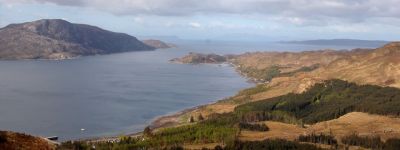
Photo Caption: Wild and remote scenery of Knoydart on a visit in May – Wild Knoydart guided walking holiday
If we think about hiking in Spring, the long daylight hours definitely make it more pleasurable – if challenging to get the kids to sleep when camping. At the beginning of March, we already have 10.5 hours of daylight here in the Cairngorms but by the end of March it’s already increased rapidly and we’re up to 13 hours daylight. For example, March 19th 2015 sunrise is around 6.20am and sunset about 6.25pm. Early starts no longer essential to make the most of the daylight.
Scottish sunrises and sunsets – images from Scot Mountain Holidays
Sunrise and sunset times in the Cairngorms
Don’t kid yourself – it’s hard to keep fit in winter. Even if it’s not snowing, the shorter days and cooler temperatures just bring to mind more images of hibernating than getting outside and hiking or biking.
Of course, there are those (in a large minority) who love winter for the snow, for the skiing etc; but for the rest of us it takes a cattleprod to get out to the gym … but then something magical happens by the middle or February as the days start to lengthen here in the Highlands and all of a sudden it’s not so hard to get up and out. There is certainly a reason why we have the phrase: “The Joys of Spring”. Now we can say goodbye to the inside of a sweaty gym and take the bike out of the shed, dust off the backpack and take the running shoes out in the woods and along the trails.
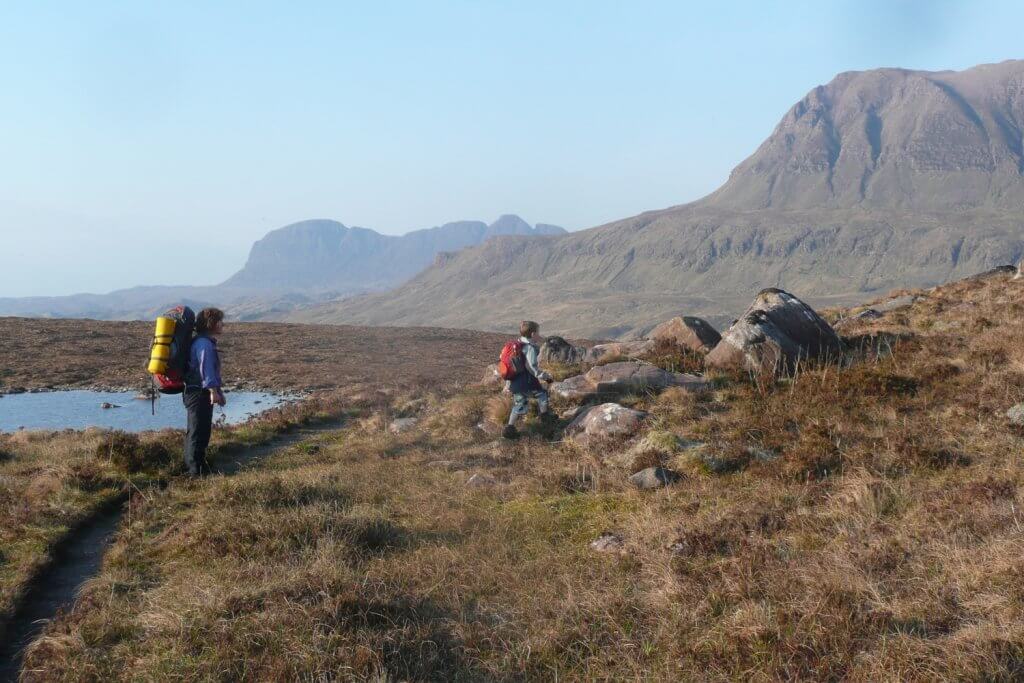
Hiking in to a secret wild camping spot in Assynt
Photo caption: Spring also means that it’s a time the kids can get back outside. You no longer need to wrap them up like Mummies. This photo was taken on a backpack to a wild camp in Assynt in May. If you’d like details of this trip, we can arrange this for small groups and family groups under Andy’s guidance.
In winter, we spend a lot of time instructing about the dangers involved in going out on the snow and ice. Andy runs multiple courses showing clients how to use ice axe and crampons and how to assess the risk of avalanches. All these are things which put the multitude of hikers off. Most people perceive the Highlands as being far too dangerous in winter. You’d almost be taking your life in your own hands to even consider it. Of course, reality is nothing like that and for the number of people who do go out in the hills. The number who have accidents or need to call on mountain rescue is a minute proportion. Accidents are always reported in the media which exaggerates the frequency with which they occur.
Nevertheless, Spring means that these worries can retreat once more and the hiking boots can be dusted off and the maps taken down once more to plan for some high level hikes across the hills. There’s a reason why events such as the TGO Challenge take place in the Spring.
Do bear in mind though – that winter is never far away in Spring here in the mountains and due to our latitude, snow can return with unexpected force in April and May.
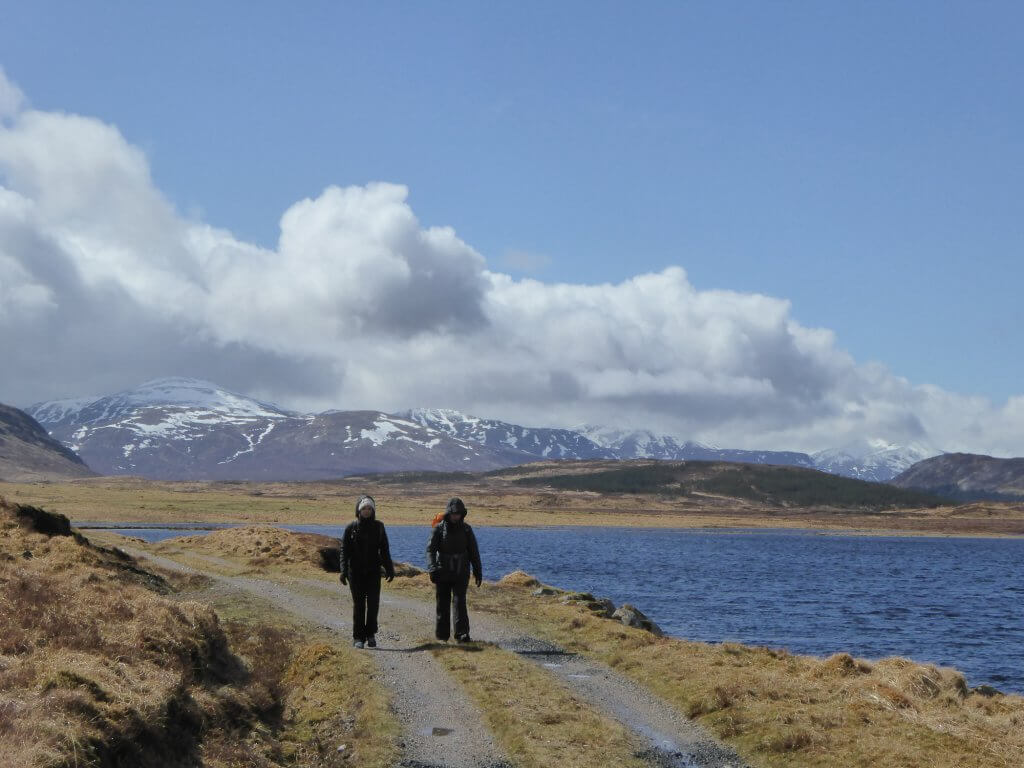
Perfect spring weather for hiking
Hiking in Spring means that you can enjoy long blue sky days, without the ever-present midge. To be honest, in the Cairngorms the midge question is not as great a threat as on the west coast. Despite the relative proximity of the west coast (in Australian or American terms) the weather is very different. In the Cairngorms, the weather is drier and the winters on average colder. Cold winters greatly reduce the presence of midges in the summer.
You can tell our local climatic zone is drier more often than the west coat by the colour of our hills. The hills in the Cairngorms in summer are purple as the bell heather flowers. Bell heather likes dry conditions to flourish. The wetter west coast hills are generally green and grass covered.
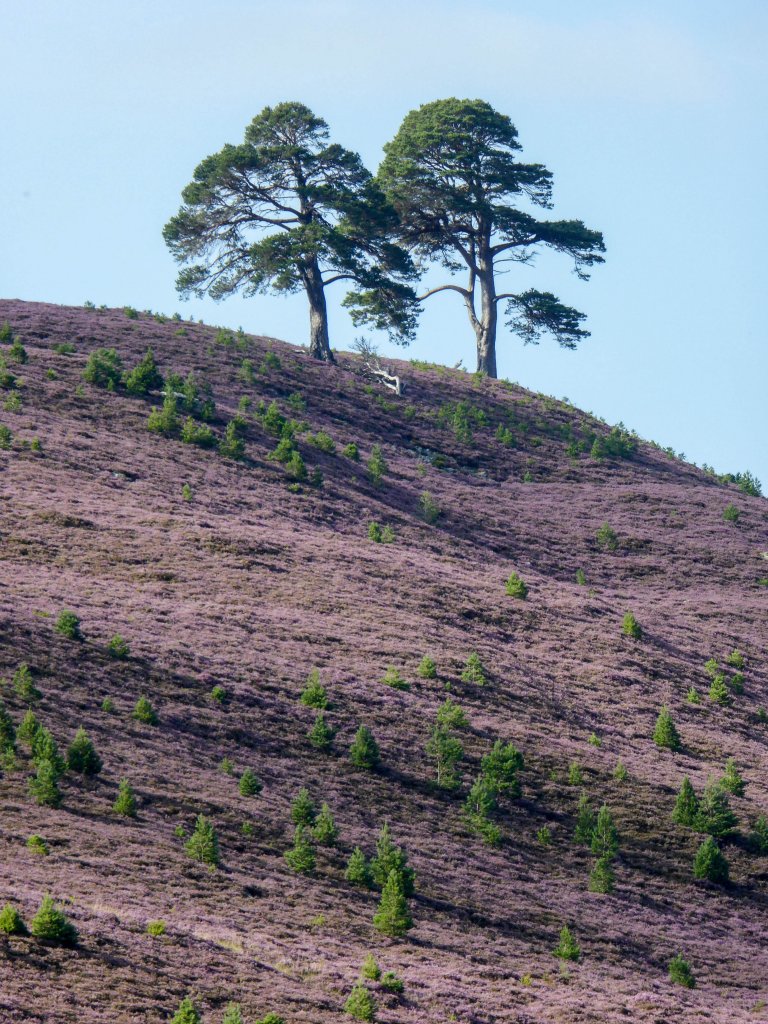
Bagging Munros in winter is a specialist pursuit. Winter in the Scottish Highlands is a majestic spectacle, where the landscape transforms into a pristine wonderland blanketed in snow. For adventurers seeking a thrilling challenge, bagging Munros in winter offers an unparalleled experience.
Bagging Munros takes on a whole new level of excitement in the winter months. The landscape undergoes a metamorphosis, as the summits are cloaked in snow and ice. Each ascent becomes a test of skill, endurance, and determination, as trekkers navigate through snowdrifts, icy slopes, and unpredictable weather conditions.
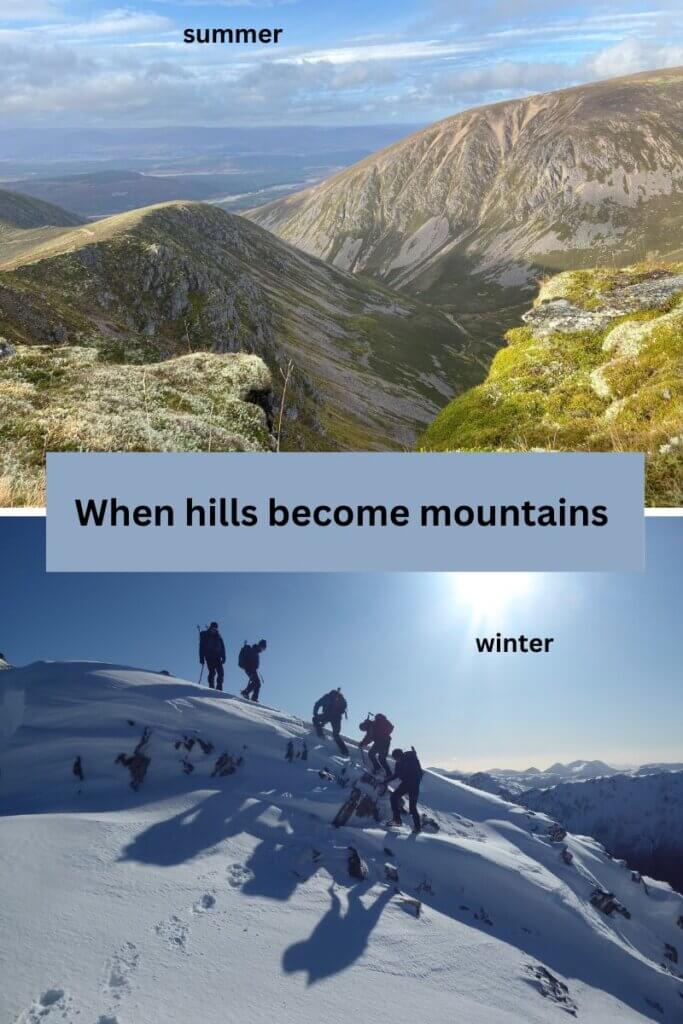
It’s difficult for those from areas where the mountains are 1000s of meters high to appreciate the challenge which Scotland can offer in winter. Every year people die in our winter. The power of nature in a maritime climate should not be underestimated. Winds can regularly be hurricane force; which is challenging in itself. Add to that a high level of precipitation; whiteout conditions and you have the equivalent of mountains in the Alps about 3000m high.

Test your limits, within your means
Preparation is paramount when embarking on a winter Munro bagging expedition. Proper gear, including crampons, ice axes, and layered clothing, is essential to combat the harsh elements and ensure safety. Additionally, knowledge of avalanche awareness and navigation skills are indispensable for navigating the treacherous terrain.
One of the most exhilarating aspects of bagging Munros in winter is the unparalleled sense of accomplishment that comes with conquering these peaks amidst the challenging conditions. The crisp mountain air, the breathtaking vistas, and the solitude of the wilderness combine to create an unforgettable experience that leaves a lasting imprint on the soul.
However, winter Munro bagging is not without its risks. The unpredictable weather can change rapidly, turning a seemingly benign ascent into a perilous endeavor. It is crucial for adventurers to exercise caution, monitor weather forecasts diligently, and be prepared to alter plans if conditions deteriorate. Make sure you have the relevant skills for the conditions. There are plenty of companies (including ourselves) who can offer both navigation and winter skills training. If you are just thinking about beginnning winter walking, this is a good place to start.
Despite the inherent challenges, the rewards of winter Munro bagging are immeasurable. Each summit conquered represents a triumph of the human spirit over adversity, a testament to the indomitable will of the adventurous soul. Moreover, the camaraderie forged among fellow mountaineers in the face of adversity fosters a sense of community and shared purpose that is truly special.
In conclusion, bagging Munros in winter is a pursuit that embodies the spirit of adventure and exploration. It offers a unique opportunity to experience the untamed beauty of the Scottish Highlands in its most raw and awe-inspiring form. For those who dare to venture into the frosty embrace of the mountains, the rewards are boundless, promising memories that will be cherished for a lifetime. So, grab your gear, heed the call of the wild, and embark on an unforgettable journey to conquer the Munros in winter.
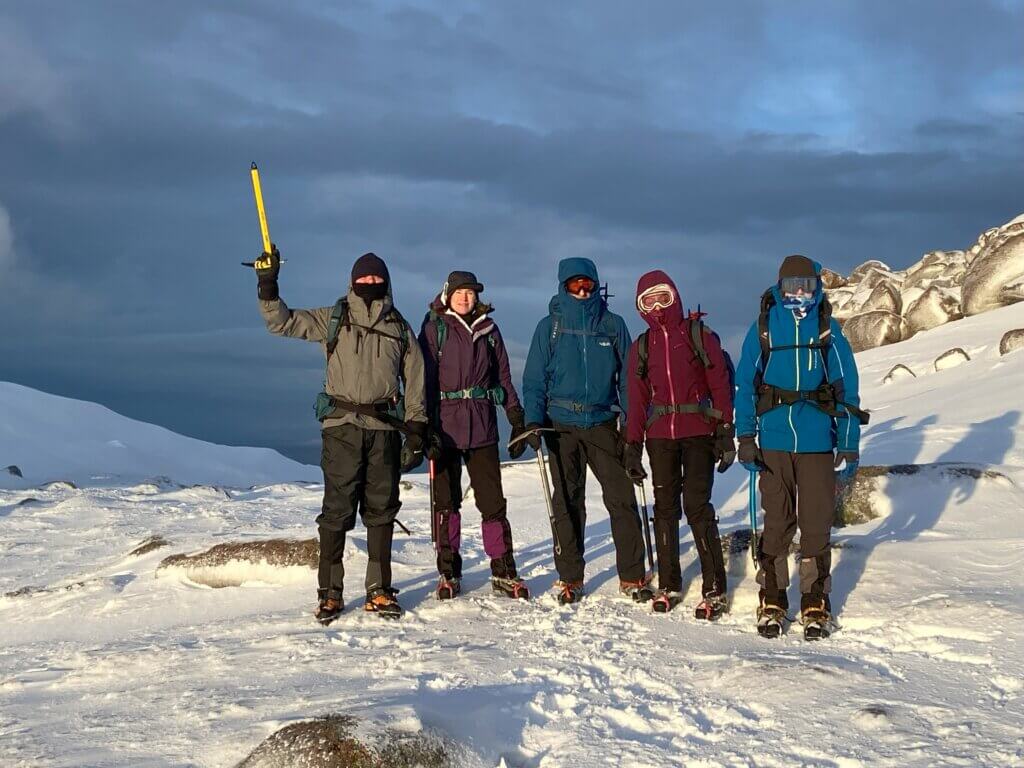
Walking comes in many different guises from dog walking to marathon walking. Perhaps then there’s a reason why “hiking” is becoming much more common usage for wild walking, long-distance and mountain walking. Hiking in summer and walking in winter can almost be classed as 2 different sports.
You might be a keen walker. Alternatively you might have started to develop an interest in walking later in life. You might be walking for health reasons or you might be Munro bagging. Whatever the reason, once you turn to hiking in the mountains, sooner or later you might want to extend your season so you can continue to hike all year round. You’ll want to go walking in winter.
Hiking in winter has its own distinct rewards from unending views in crystal, clear air conditions to solitude and glistening fresh snow, unblemished by evidence of other people. There are however also obvious hazards and also some aspects to winter walking/hiking, which you might not have considered.
In Scotland the winter mountains will almost invariably have snow on them for at least part of the winter. We live in hope that the season will be longer and the snow will remain, but this year, 2017, even the most stubborn of snow patches melted away completely. It’s nearly the end of October already and there’s as yet no sign of the white stuff returning. Still if you are considering some winter hiking, make sure you have received some formal training in the skills you need to remain safe in winter conditions. There is nothing more sapping than cold weather.
There are a surprising number of avalanches in Scotland but most of them go un-witnessed and hence unreported. Fortunately we do have a very good avalanche information service, especially in the Cairngorms. Throughout the winter they produce a daily report of the avalanche risk. With formal training and a bit of experience, you can learn to interpret the report so that you pick the safest route for the day.
Making sure you have the proper boots for winter is essential. “Your boot is as much as tool as your crampons and ice axe” is a sentence often repeated by our own Andy Bateman when he is talking to winter novices. You must have stiff boots rated as B2 or above. However, the problem with the boots is that they weigh a lot more than boots you will be used to walking in and they are so much stiffer that they force you to walk in a slightly different gait from usual. Over the course of a couple of days, the difference in the boots can take its toll on you. You legs and feet will feel a lot more tired than they usually do for the same amount of summer walking.
Take care when wearing winter boots. Try to baby your feet a wee bit and if you have the opportunity a little bit of simulation will stand you in good stead, even if people give you funny looks when you clump along the beach promenade or up and down the city streets in monster boots.
Your pack, whether for an expedition or a day walk, is inevitably going to be bigger in winter. Not only will you need more in your lunch, but you’ll also need space for the additional gear: your ice axe, your crampons, thicker, warmer gloves etc. You’ll need to be ready for the extra weight.
TOP TIP: always try to pack your crampons within your pack as if you have them tied to the outside of your pack, you run the risk of losing one or both of them quite easily.
In winter Scotland’s hills become mountains due to the severity of the weather conditions. There are regularly winds over 100 miles an hour in storms and though you might not plan to be out in conditions like that, even experienced mountaineers can get caught out. A friend of ours was once out in the Cairngorms when the weather turned. He and his party ended up almost crawling out as they were getting blown over when they stood up. The wind was even strong enough to take a head torch off one of their heads.
It’s not only the colder weather which helps to burn up more calories. You do have to carry more stuff with you when you go out hiking in winter. The additional weight will help to burn more calories at the end of the day. But always remember, if you put more calories in than you consume you won’t be losing weight. Just heading out for a hike is not a guarantee that you will lose weight – if that is your aim. You need to balance out keeping warm with the number of calories you consume. You don’t want to be cold, but neither do you want to overeat.
How many calories are burned by being cold?
Calories burned in cold weather
Cold air carries less moisture than warm air and therefore produces better visibility. It is warm air streams which bring precipitation. There is some truth to the statement that it is too cold in the arctic to snow.
Fewer people enjoy going out in the cold weather despite the fact that we have amazing gear now which can keep us warm in virtually any conditions. However, this means that those of us who do go out can enjoy a real sense of solitude and space.
There’s nothing better than sharing the story of the day. The warmth of a fire and a cup of tea at the end of the day will be appreciated so much more after being out in cold conditions.
When people come back after a day out in the snow, they almost always have a novel story to share. The risks are greater than in the summer, but then this enhances the benefits too.
If you stop going out in the colder weather, it may be more difficult to get back to your regular hiking than before. The risk of losing your fitness over the winter is greater as you get older. Walking on the treadmill isn’t really an adequate substitute, but if there’s no other choice …
I don’t know why the mountains seem so much more spectacular when covered in snow, but they do. Maybe it’s because they look more pristine. Maybe it’s because if gives them more shape. Whatever the reason, a little snow seems to add some “je ne sais quoi” to the mountain scene.
We specialise in guided walking holidays and walking skills here in Scotland.
If you’d like to leap in to winter at the deep end, why not think about a snow hole expedition: not an igloo, a snow hole; not an emergency shelter but a deliberate night out in a purpose built shelter. Check it out:
We’ve scheduled a new trip for winter 2024. We’re going to be based in Glencoe for a week in March bagging some tasty Munros. It’s a new venture for us so we’ve looked for some spectacular images to illustrate the trip. On a search of Flickr, we found John McSporran. John has kindly agreed not only to lend us some of his spectacular Glencoe images, but he’s also written a brief summary of why he personally finds Glencoe such a fascinating area to explore.
I first began photographing Glencoe about 20 years ago. It is one of those places where the weather is always changing, the light can be fantastic one minute and terrible the next. It can be mean and moody, mystical and magical, but always interesting and frequently awe inspiring. Even on horrible days, that fleeting moment when a beam of light strikes the mountains makes it all worth while.
About 10 years ago I realized that if I wanted the best photos of Glencoe I needed to get high. That’s when I began climbing its mountains. Then I realized that I needed to be ‘up top’ for sunrise and sunset (the golden hours). That’s when I climbed in the dark using a head torch. Then I began to camp out up top. Then I went ‘full on’ and climbed in the dark in mid winter using an ice axe and crampons – just for that one great photograph. Carrying 25 kilos / 55 lbs of camping and photography gear to the top of a mountain can be hard (particularly when in your late 50’s), but the experience of stunning sunrises and sunsets in Glencoe makes it all worth while.
I have met hundreds of people on the Scottish mountains, some I meet many times, some only once, but there is a community spirit amongst those who climb mountains, especially photographers – solitary committed people whose hard shell cracks as soon as we begin to swap stories.
My favourite Glencoe mountains are Beinn a’Chrulaiste and Buachaille Etive Beag. They are not the hardest or the tallest, but they provide the best viewpoints and give sweeping panoramas of the others.
Other favourite locations are:
There are so many great locations, you are spoiled for choice.
We have a saying in Scotland – if you don’t like the weather, wait 15 minutes, it will change. I hope you enjoy your visit to Glencoe.
For more choices of walking holidays in Scotland, head over to our main holiday page
For more information on walking in the Highlands
All content © Copyright Scot Mountain Holidays 2024
Responsive web design by Summit Web Solutions